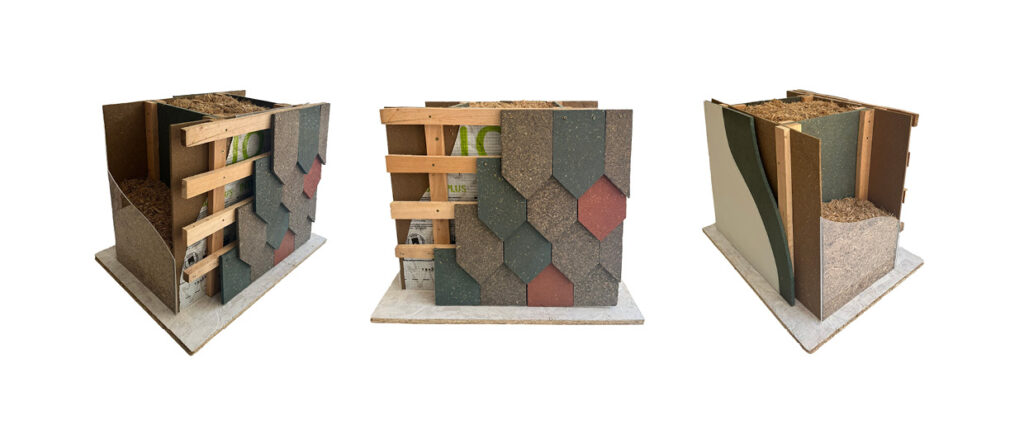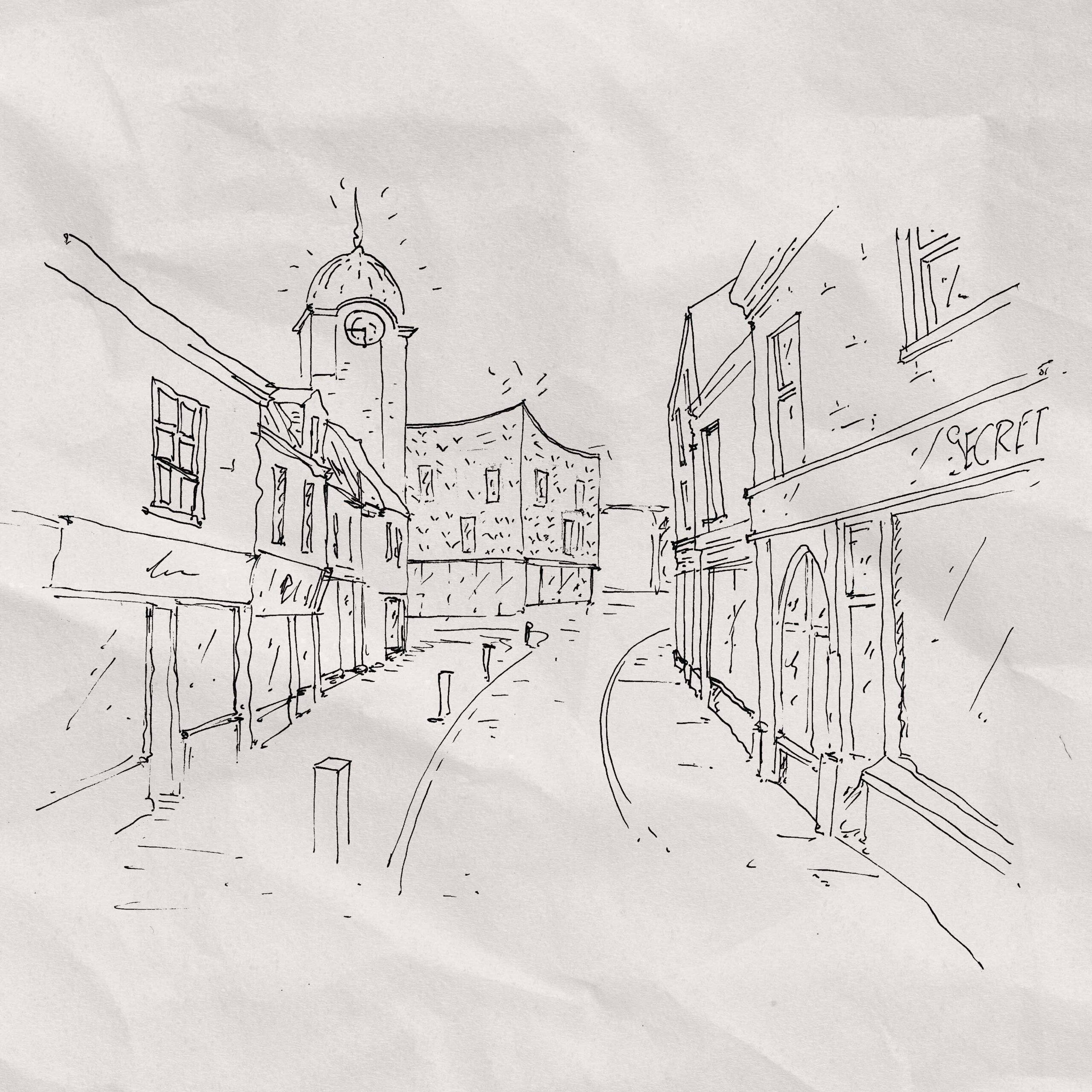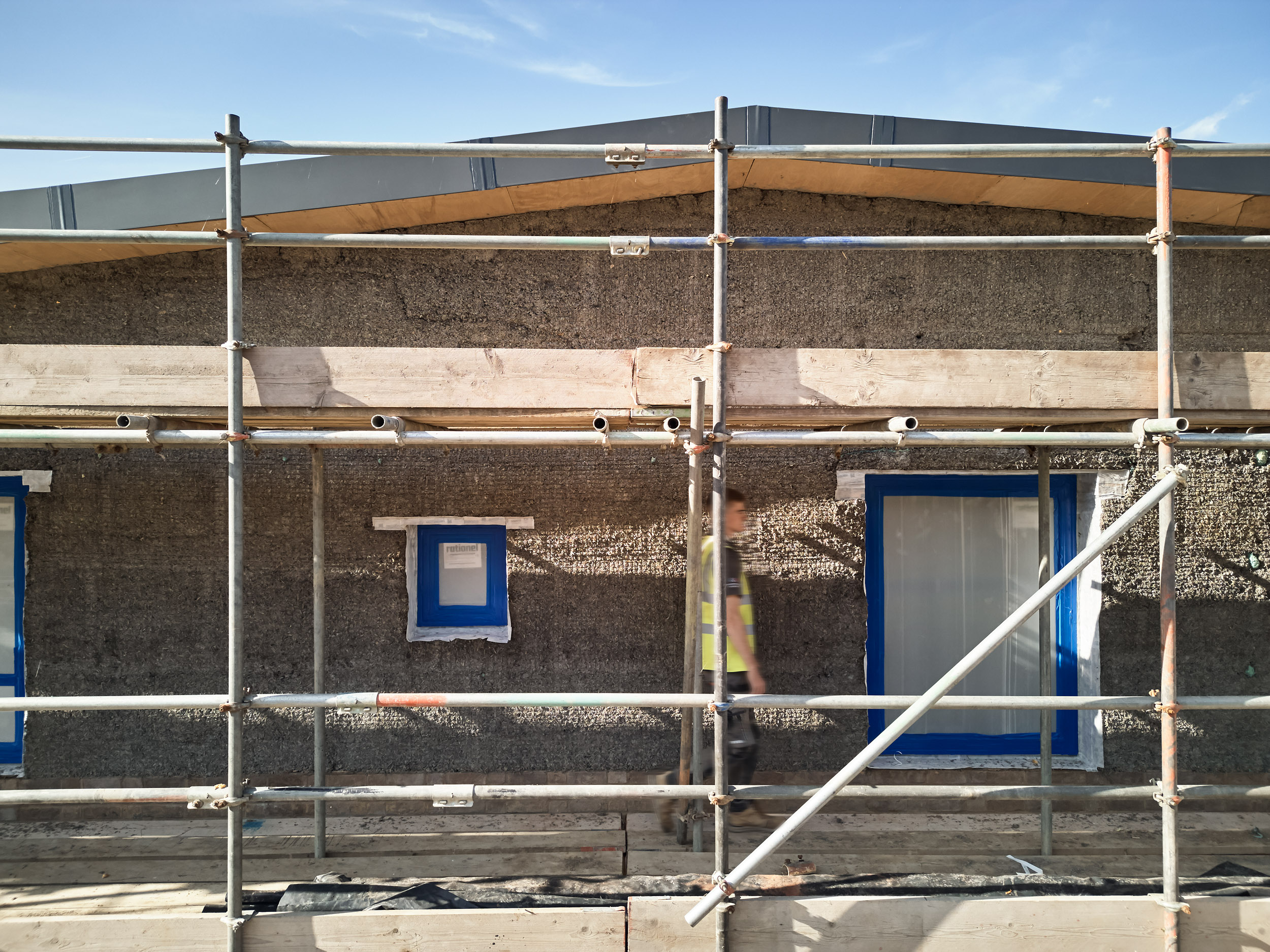Our recent development from the FibreBroads research project is the ‘Wetland Frame’, a wall construction detail crafted primarily from wetland-sourced materials – a low carbon, locally sourced, and sustainable alternative to traditional timber frame construction systems.
Wetland Materials Research
As part of our research, we explored existing wetland materials and paludiculture product development, aiming to demonstrate how these can be used within construction. After some interesting internal practice discussions, we chose to focus on creating a wetland-based alternative to traditional timber-frame construction. We felt this was the most feasible option to offer a like-for-like alternative given the availability and development of current paludiculture products.
The Wetland Frame Wall Construction
Our proposed system can be implemented either on-site or as a prefabricated modular system – which could be delivered to site as wetland-board cassettes, replacing traditional OSB or timber boards.

The wall build-up comprises of the following wetland sourced materials:
- Typha De-Inking Cladding Tiles (A): These tiles are made from recycled de-inking sludge, providing excellence waterproof qualities.
- Black Alder Timber Battens & Counter Battens (B): These support the shingle cladding and ensure proper drainage and air circulation in the cavity (this would need to be treated).
- Typha Lining Fibreboards (D & H): These boards serve as an alternative to the sheathing boards typically used in timber-frame or timber cassette systems.
- Paludiculture I-Joists (E): Comprised of Black Alder flanges and Typha Fibreboard webs (we hope you like our creativity here!).
- Chopped Typha Loose Fill Insulation (G): This low-tech insulation method offers a sustainable alternative to materials such as cellulose, PIR, EPS or Rockwool.
- Clay-Typha Plaster (I): A wetland-based alternative to traditional straw binder.
And the minimal non-wetland materials:
- Airtight breather membrane (C): This membrane enhances thermal performance while allowing the wall to breathe.
- Screws and nails: for attaching the materials together!
The Potential and Future of Wetland Materials
While these materials are still in the product development phase and have not yet been tested or certified, we hope our model showcases the potential of natural building materials and helps to increase the awareness of their regenerative potential. We’re particularly proud that no glue was used in the manufacturing or construction processes. This means the structure can theoretically be dismantled, decomposed or re-used at the end of its life without contamination.
Look out for our next blog post, where we will be sharing the benefits of paludiculture products and their role in sustainable construction.
By Katey Oven




